The dumbbell triceps extension, also known as the overhead dumbbell triceps extension or French press , is one of the most effective isolation exercises for targeting the triceps brachii.
Research shows that training the triceps in an overhead position leads to greater hypertrophy of the long head of the triceps.
When your arm is raised overhead (shoulder flexion), the long head is put into a significant stretch because its origin (on the scapula) is pulled further away from its insertion (on the elbow).
This stretched position can lead to muscle micro tears and potentially more hypertrophy (growth).
The dumbbell triceps extension can be performed in various positions, including standing, seated, or lying (flat, incline, or decline). It can be executed using either one arm at a time or both arms simultaneously.
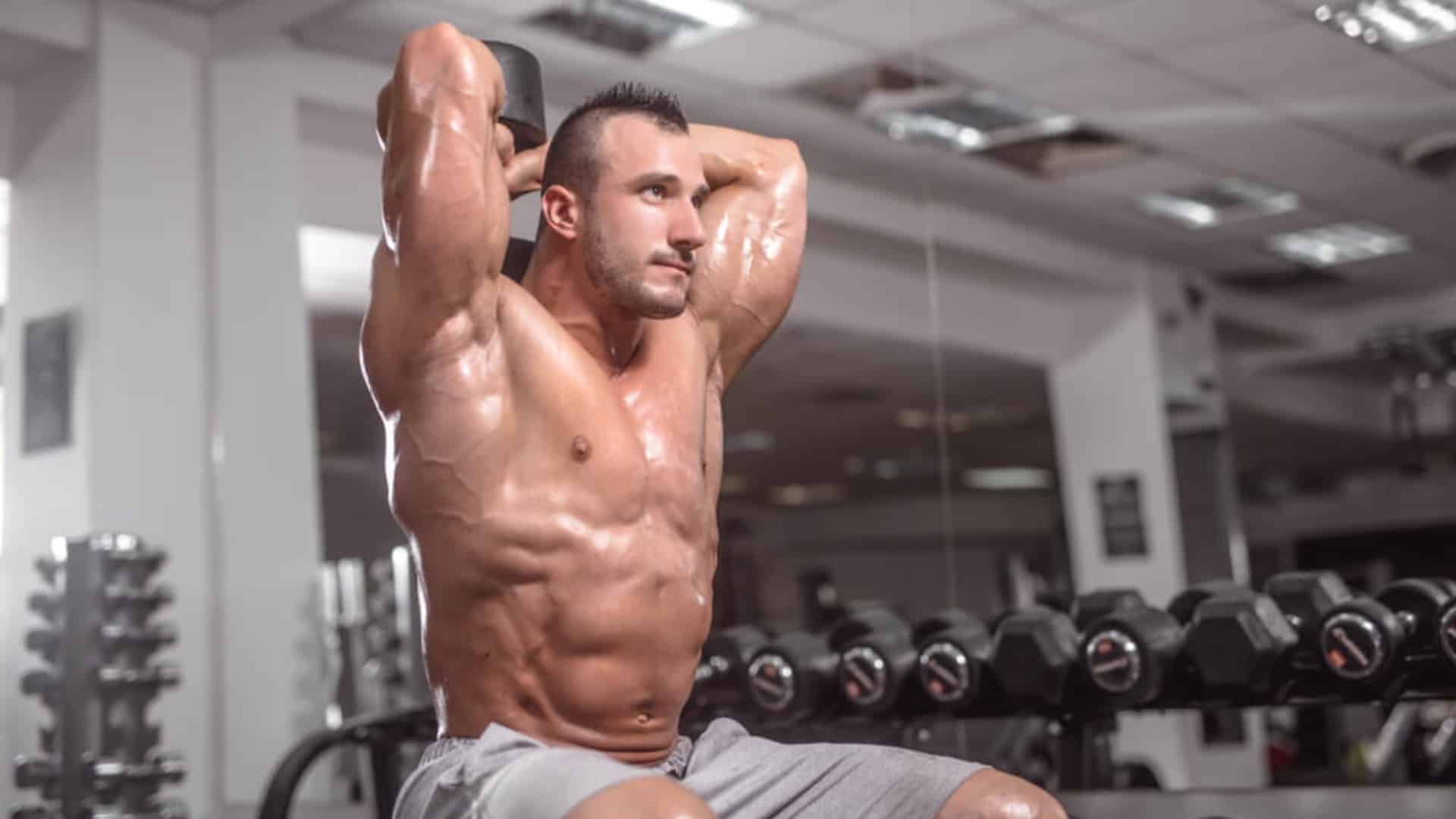
Dumbbell Tricep Extension Muscles Worked
- Primary Muscle: Triceps Brachii (Long head, lateral head, medial head), especially the long head in overhead variations.
- Secondary Muscles: Anconeus, Deltoids (Anterior head)
- Stabilizer Muscles: Core (Rectus abdominis, obliques), Trapezius & Rhomboids and Forearm muscles
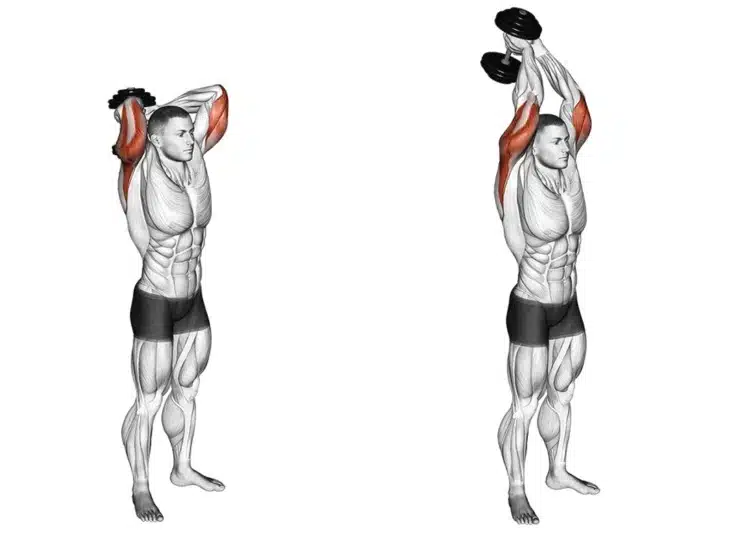
Want to take your gains to the next level? Discover your daily calorie needs with our free TDEE calculator
How To Do Standing Dumbbell Overhead Extension
- Choose a dumbbell of the appropriate weight. Start lighter than you think, especially if you’re new to this variation.
- Stand with your feet about shoulder-width apart, or in a comfortable, athletic stance. Maintain a slight knee bend – soft knees.
- Before you even lift the dumbbell, brace your core as if you’re about to take a punch to the gut. Squeeze your glutes slightly. This will protect your lower back.
- Safely lift the dumbbell. You can clean it on your shoulder first, then press it overhead.
- For a single dumbbell, interlock your fingers around the handle and cup the top end of the dumbbell, pressing your palms against the underside of the top plate (forming a diamond or triangle shape with your hands). Your thumbs should wrap around the handle for security.
- Keep your upper arms as stable and vertical as possible (imagine they’re glued next to your ears), and slowly lower the dumbbell behind your head by bending only at your elbows.
- Try to keep your elbows close to your sides. A slight natural flare is okay for some.
- When you reach the bottom of the movement, extend your elbows to elevate the dumbbell to its initial position.
- As you reach full extension at the top, consciously squeeze your triceps hard for a moment.
Proper Form And Technique
- Keep your elbow close. People tend to flare their elbows outward, which can put unnecessary stress on the shoulder and elbow joint.
- Always remember that this is a tricep workout, not back training. Do not bend your back while pushing down the weights.
- Always use weights that you can handle comfortably.
- Always use the most extended range of motion possible and control the dumbbells throughout the set.
- Focus on using your tricep muscles to control the movement, avoiding swinging the weights or using momentum.
- Keep the head fairly neutral. Don’t let the neck jut forward, as this may pressure the cervical spine excessively.
- Exhale as you extend your arms, and inhale as you lower the dumbbells back to the starting position.
- Don’t just move the dumbbell; feel your triceps working. Focus on the stretch during the eccentric and the hard squeeze during the concentric. This internal focus makes a huge difference.
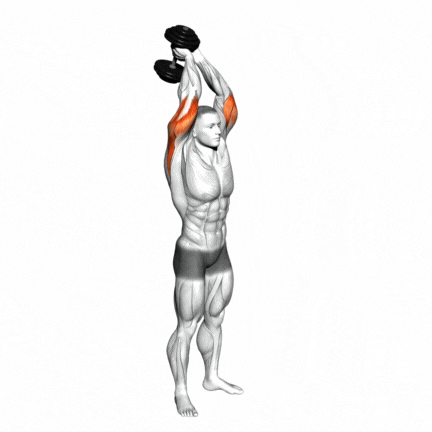
To Stay Motivated: 150+ Gym Workout Motivational Quotes To Stay Fit
Dumbbell Overhead Tricep Extension Variations
The dumbbell tricep extension variations are a great way to strengthen your triceps.
I will show you eight different ways to perform triceps dumbbell extension exercises that you can incorporate into your workouts.
1. Seated Dumbbell Overhead Extension
When you sit down, especially on a bench with back support, your lower body is immobile and your torso is supported well. This drastically reduces your ability to use leg drive and hip thrust to cheat the weight up and forces the triceps to do almost all the work.
Additionally, it supports you to lift heavier weights safely than standing, where balance issues and core fatigue may restrict it.
I often switch clients to a seated variation if I notice their form breaking down in the standing version, particularly if they start using too much lower back arch or bouncing with their knees.
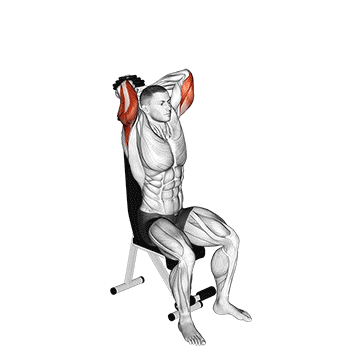
Know More Body Fat %: Use Our Free Body Fat Calculator
2. One-Arm Overhead Dumbbell Triceps Extension
We all have a dominant and a non-dominant side. When performing bilateral exercises, the stronger arm can often compensate for the weaker one, masking or even exacerbating imbalances.
Unilateral exercises (single arm) work forces each arm to lift the load independently, and you ensure both arms are developing more symmetrically in terms of strength and size.
If you notice an imbalance, you can either start with your weaker arm (so it’s fresh) or even do an extra set for the weaker arm until it catches up
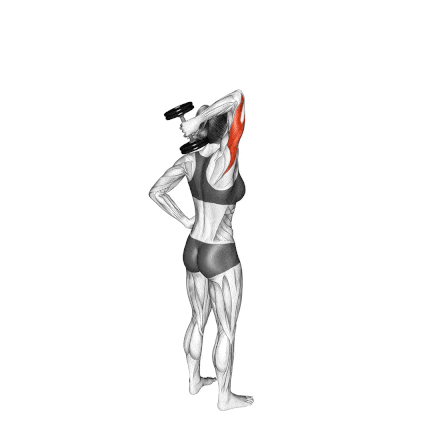
3. Dumbbell Lying Triceps Extension
The Dumbbell Lying Triceps Extension (often called Dumbbell Skullcrushers) is an excellent move to begin your triceps routine.
In the lying version, your arms are typically perpendicular to your torso (or slightly angled back). While the long head is still involved, this position also effectively hits the lateral and medial heads of the triceps.
If overhead extensions cause shoulder pain even with good form, lying triceps extensions are an excellent alternative to keep training your triceps effectively.
You can perform lying triceps extensions, even unilaterally, for additional focus and balance.
It is a versatile exercise with several effective variations:
- Incline Dumbbell Tricep Extension
- Decline dumbbell tricep extension
- Two arm dumbbell tricep extension
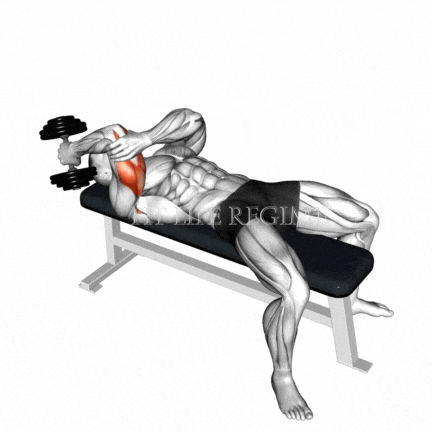

Manish is a NASM-certified fitness and nutrition coach with over 10 years of experience in weight lifting and fat loss fitness coaching. He specializes in gym-based training and has a lot of knowledge about exercise, lifting technique, biomechanics, and more.
Through “Fit Life Regime,” he generously shares the insights he’s gained over a decade in the field. His goal is to equip others with the knowledge to start their own fitness journey.
